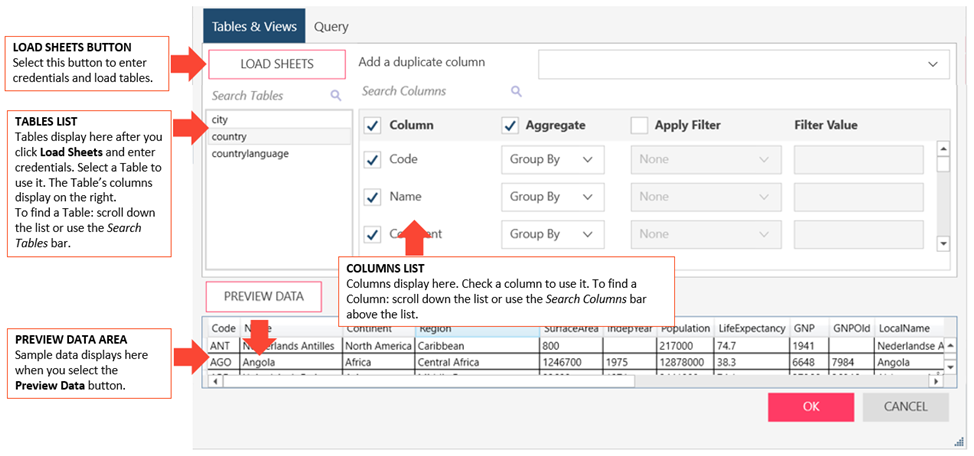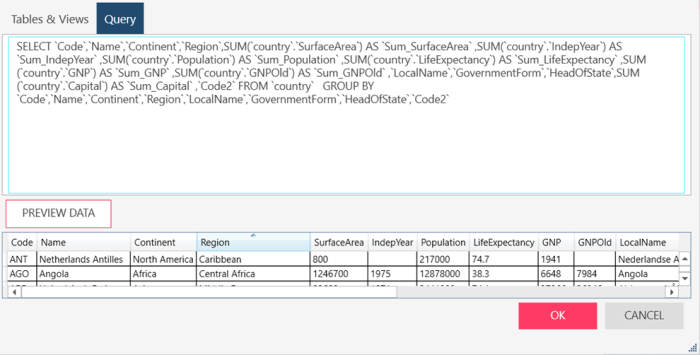Connector Dialog for Google Sheets
Enter values into the dialog box to connect and fetch data from your Google Sheets data source.
Note that large tables may take some time to load via the Google Sheets connector. The connector exposes individual sheets within a Google document as a table, and the names of these sheets are obtained by first querying all of the documents in the account and then querying each document individually to retrieve the sheets within the document.
The majority of the time spent retrieving tables via Google Sheets is based on HTTP requests for each individual sheet. To get the column schema , the contents of the sheet are scanned, after which a row scan is performed on the data. Thus, the speed of retrieval is gated here by network latency.
NOTES:
The connector does not currently support tables with:
-
Long names (names with 127 or more characters)
-
Columns with names containing special characters (e.g. French special characters)
Options
|
Field |
Description |
|
Connection Settings |
Click to toggle hiding or displaying these connection settings:
Connection options required to connect to the data source. If you need multiple string connection options, separate these by a semi-colon.
Check to ignore SSL Certificate Errors during connection.
Check to reset the connection.
Indicates whether or
not the trashed files will be listed. |
|
Tables and Views Section |
Allows you to load, and then select, the tables from your database by manually selecting from a list.
To load tables and views via search and select:
The columns of the table are displayed in the Columns List (beside the Tables List). Note: If you wish to add a duplicate column, select this column from the Add a duplicate column drop-down list provided.
To Select a Column Check the boxes beside the columns you want to use. If you want to use all columns check the Column box on the header.
To Aggregate Columns
If the data returned is to be aggregated, check the Aggregate box on the header, then select the aggregation method you want to use for each column. The following aggregation methods are possible for each data type:
To Filter Columns
If the data returned is to be filtered, check the Apply Filter on the header. Then, for each column, select a filter method from the filter drop down and then enter the filter value in the Filter Value box. Note that some data sources require case-sensitive filter values. Refer to this list to check which data sources have case-sensitive filters. To load tables and views using an SQL Query, select
the Query tab |
|
Query |
Allows you to load, and then select, the tables from your database by entering a SQL Statement. If you already selected Tables and Views, this box is updated to show the corresponding SELECT * FROM TABLE query.
If you want to define the query, enter the SELECT and/or EXEC statements to execute. Notes:
In cases you need to use a series of SQL statements with or without comments, we recommend you use stored procedures to contain these statements. The stored procedure can then be executed from the form.
|
|
Preview Data |
Click to fetch data using the credentials and criteria you have specified. This allows you to confirm your connection, ensure you have connected to the correct table, check your query, and verify the information that will be loaded. Notes:
|







